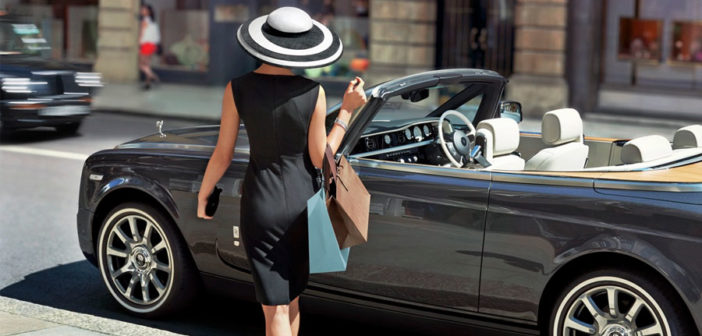The demand for premium goods is growing around the world due to the increasing availability of discretionary income in emerging markets, according to a report by Nielsen.
In addition to seeking a “taste of the good life,” consumers are purchasing premium goods, across product sectors, for rational and emotional reasons. In its “Moving On Up” report, Nielsen found that emerging market consumers’ emotional reasons correspond with status aspirations and accomplishment signifiers more often than individuals living in established marketplaces.
“With increasing affluence, consumers are craving products that offer a total experience,” said Liana Lubel, senior vice president at Nielsen Innovative Practice. “Beyond basic-need products, many consumers also are buying based on how products make them feel, and premium products tap directly into a desire for products that provide specialized, enhanced or exclusive benefits.
“But delivering on their expectations of the experience remains critical, and the most successful premium products are those that perform an important job for which previously available solutions were unsatisfactory or nonexistent,” she said.
For the report, Nielsen based its findings on more than 30,000 consumer respondents in 63 countries during specific time periods. Data has been sourced from consumers in Europe, Latin America, Asia-Pacific and North America.
Longer purse strings
Nielsen defines a good as being premium if it costs at least 20 percent more than the average price of the category. Interest in premium goods is growing rapidly and in some markets the sector is outpacing the total growth for categories of fast-moving consumer goods (FMCG).
In Southeast Asia for example, the premium segment grew 21 percent between 2012 and 2014. Premium goods grew more than double the rate of mainstream and value tiers, at a rate of 8 and 10 percent, respectively.
Over the same period, China saw premium product increase grow by 23 percent. Latin America, with the exception of Mexico and Venezuela, saw similar growth, with the sector outpacing total FMCG growth over the 12 month-period ended June 2016.
A driving factor in premium goods’ increased interest is that many consumers, for the first time, have greater buying power. In markets such as China, India and sub-Saharan Africa, purchasing powering has grown 7 and 9 percent per year, according to World Bank’s data.

Image courtesy of Neiman Marcus
Also, a larger global middle class with high discretionary income ensures that premium goods interest will continue in the near future. The Organization for Economic Cooperation and Development predicts that the global middle class will rise from 1.8 billion in 2009 to 4.9 billion consumers by 2030, with much of this growth attributed to emerging markets in Asia.
Although the extra income of global middle class consumers are driving sales in the premium sector, it is not the only purchase reason.
Consumers are not attracted to premium goods, whether it be apparel or personal care, simply because they can afford the higher asking price. Nielsen found that only 31 percent of respondents consider a premium product because it is expensive.
Instead, a majority of survey respondents, 54 percent, said that premium goods’ attraction lies in “exceptional quality and performance” as well as “high-quality materials or ingredients.” Forty-six percent referred to “superior function or performance” when defining a premium product.
Four in 10 respondents connect premium products to superior design or style and a well-known brand name. Style is becoming increasingly important in emerging markets such as Vietnam, China and Turkey, but a trusted brand name is more important to consumers in the Philippines, South Africa and Malaysia, for example.
In comparison, established markets such as Russia, France and Switzerland, consider product price a defining feature of a premium product. Sixty-three percent of Russians surveyed, for instance, state price as the most common premium-product attribute.
Feel-good goods
While affordability is a new and increasing trend in emerging markets, emotional drivers are also influencing purchasing of premium goods.
Per Nielsen’s report, 52 percent of global respondents agree, somewhat or strongly, that purchasing a premium product makes them feel good. India, China, Africa/Middle East and Southeast Asia agreed with the statement the highest while more developed markets in Western Europe, the Pacific, Latin America, advanced Asian markets and North America agree at a much lesser rate.
Similar findings suggest that purchasing a premium good makes a consumer feel confident. The responses were comparable based on location, with Indian consumers ranking the sentiment the highest at 76 percent.
Chinese, Southeast Asian and African/Middle Eastern consumers also connect buying premium products to confidence levels.
Additional self-esteem and status perception statements related to purchasing premium include showing peers they have good taste, feeling successful and showing off that success and self expression, among others.
By age, emotional and social drivers are also different. Millennials, for example, are more likely to purchase premium goods that tap into self-esteem and status perceptions.
This finding aligns with consumers’ move toward sustainable and transparent brands with “green attributes.”

Stella McCartney has built its brand on ethical business practices
In addition to quality standards, superior function and performance, a growing percentage of consumers view all-natural ingredients, environmentally friendly materials and social responsibility as important factors for purchase consideration.
Disruptive factors and a climate of uncertainty have put pressure on the retail environment, but the brands that will weather the storm best are those embracing purposeful business models.
Although brands in the luxury ecosystem are not always known to be cutting edge, they are traditionally seen as “the vanguard of inspirational leadership,” a characteristic that may spearhead the category’s move toward sustainability.
Never before has the retail environment been impacted by so many disruptive factors at once. In a relatively short time frame, luxury brands have had to navigate new consumer demographics, emerging markets, technological advancements and where to invest internally, whether that means software or store design.
In addition to these factors, consumer behavior has changed to bring forth new desires, needs and expectations.
With so much influx, the brands that respond by leading with purposeful efforts, such as transparency and sustainability, nurturing consumer relationships and giving back to the community will be positioned to survive (see story).
“Millennials face very real economic hardships and remain price-conscious,” Ms. Lubel said. “Yet many are willing to pay more for higher-quality products that are compatible with their lifestyles and values.
“In fact, millennials are drastically reshaping perceptions of premium, with authenticity, simplicity, healthfulness, sustainability and social responsibility serving as the new indicators of premium,” she said.
This article first appeared in www.luxurydaily.com
Seeking to build and grow your brand using the force of consumer insight, strategic foresight, creative disruption and technology prowess? Talk to us at +9714 3867728 or mail: info@groupisd.com or visit www.groupisd.com




